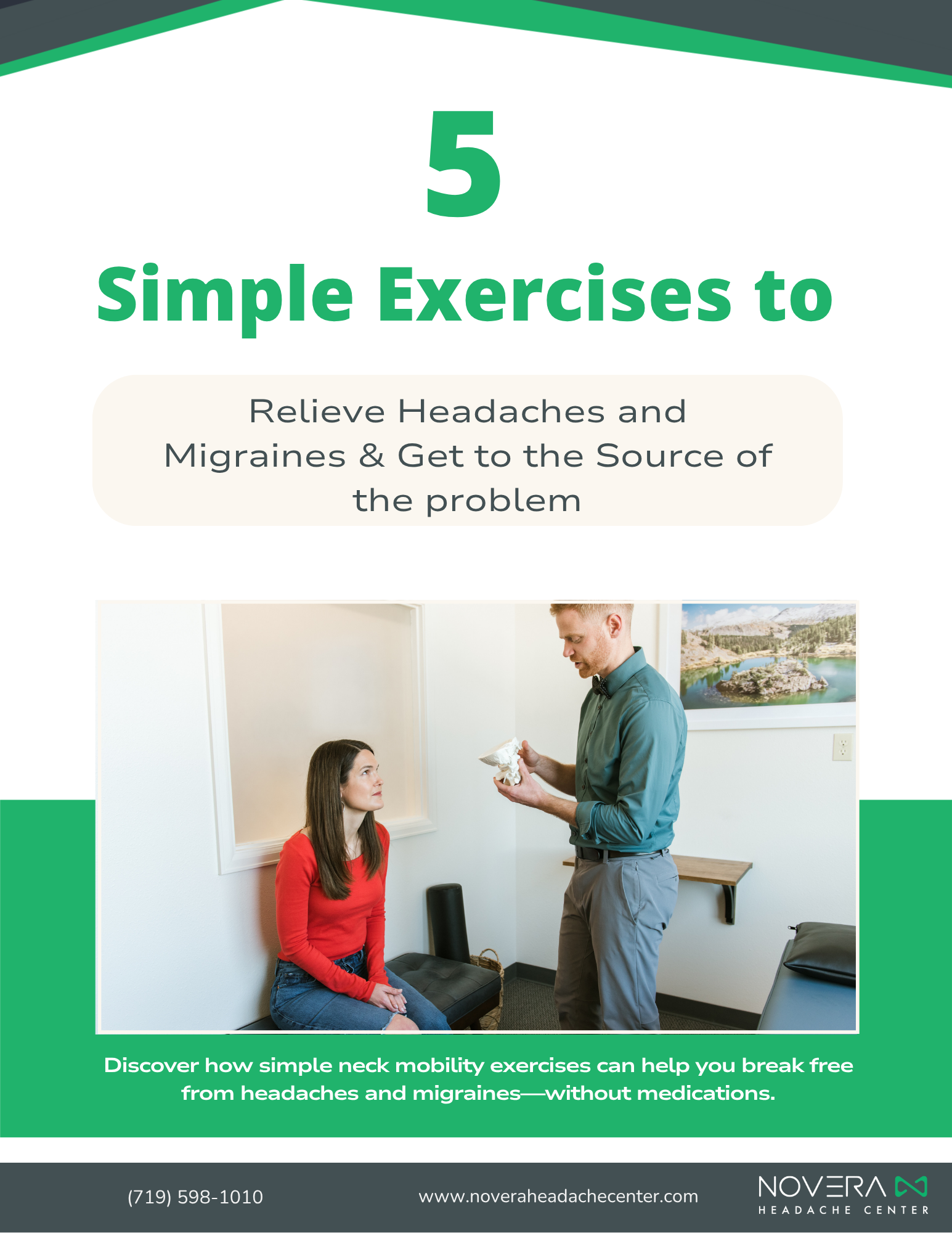At Novera: Headache Center, one of the most common hurdles patients face is the belief that their headache or migraine symptoms are too unique to be treated the same way others are. It’s a valid concern—after all, no two migraine stories are identical. But as Dr. Taves and Dr. Gutwein discuss in a recent episode of the Headache Doctor Podcast, there is a powerful unifying factor behind most headache and migraine symptoms: mobility, particularly in the neck.
Headache Presentations Vary—But the Root Can Be the Same
Some patients experience migraines with aura, others deal with vestibular symptoms like dizziness, or GI responses such as nausea and vomiting. There are hemiplegic migraines that mimic stroke symptoms and abdominal migraines in children that are often confused for the flu. And then there are the more subtle distinctions—headaches that feel sinus-related or triggered by barometric pressure, stress, or hormones.
Despite these different presentations, the team at Novera has seen a common theme: when the neck isn’t moving the way it should, all kinds of neurological and muscular systems can be thrown off. What might feel like a random collection of symptoms can often be traced back to dysfunction in the upper cervical spine and surrounding soft tissues.
Understanding the Why
As Dr. Gutwein explains, pain is not always a reliable indicator of the problem’s location. The nervous system interprets signals in complex ways, which means a pain in your face or behind your eye might actually be a result of nerve irritation beginning in the neck.
For example, the trigeminal nerve passes through the jaw and face but is closely tied to the neck. If the neck is not functioning properly, it can affect the jaw, leading to trigeminal symptoms such as facial pain or even unnecessary dental procedures. Similarly, the occipital nerves at the base of the skull are commonly involved in tension and migraine headaches and are influenced by neck mobility and muscle tone.
The Body Wants to Move
The solution is rooted in restoring movement. Dr. Taves uses the analogy of holding your phone to your ear: after a while, your elbow aches—not from trauma but from staying still. Now imagine never straightening your elbow for weeks or months. Other joints would start compensating, and the pain would spread. This is what happens with the neck when it’s not moving properly. The dysfunction can ripple into the shoulders, jaw, head, and even the nervous system, causing symptoms like brain fog, insomnia, dizziness, and pain.
Why Medication Isn’t Enough
Conventional medicine often focuses on symptom relief through medications like triptans, Botox, or even antidepressants. While these may offer temporary relief, they don’t address the underlying mechanical issue: poor neck mobility. Just like medication wouldn’t straighten your elbow, it won’t restore the function of a stiff, misaligned neck.
Massage or chiropractic care may offer some relief for a time, but without a targeted plan to restore true neck movement, symptoms often return. At Novera, the goal is to get to the root—not just manage the symptoms.
What You Can Do
Even if your symptoms feel completely unique, it’s very likely that Novera’s approach to restoring neck function can help. Patients come in with symptoms that sound rare or complex, but once the nervous system is no longer overwhelmed by constant miscommunication from the neck, the body begins to heal.
If you’re local to Colorado Springs or Parker, Novera offers in-person evaluations and treatment. For those out of state, virtual coaching and access to the SAM device via Amazon offer another path forward.
If you’re tired of chasing symptoms and want to understand what’s truly going on, this is the place to start.




